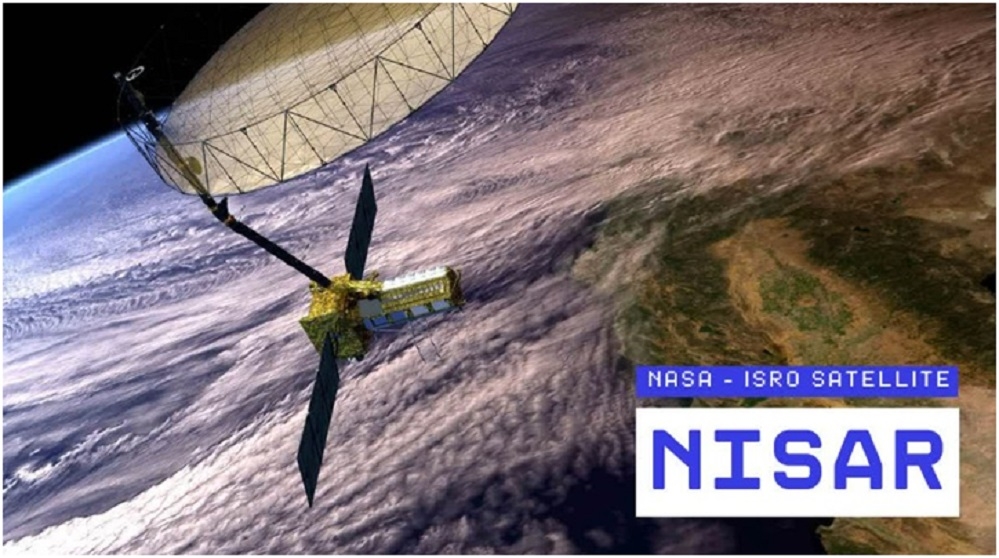NISAR Launched Successfully: NASA & ISRO's Joint Satellite To Monitor Entire Planet From Space
Total Views |

The Indian Space Research Organisation (ISRO) and the National Aeronautics and Space Administration (NASA) have successfully launched the NISAR (NASA-ISRO Synthetic Aperture Radar) mission aboard ISRO's Geosynchronous Satellite Launch Vehicle (GSLV-F16) from Satish Dhawan Space Centre, Sriharikota (SDSC-SHAR).
Jointly developed by the two space agencies, the unique Earth observation satellite has been injected into a Sun-synchronous orbit (SSO) with an inclination of 98.40.
The SSO is a nearly polar orbit where a satellite passes over any given point on Earth at the same local time each day, maintaining a consistent angle relative to the Sun for stable illumination conditions, which are essential for imaging and other time-sensitive applications.
The NISAR satellite will circle Earth 14 times a day, scanning nearly all the planet’s land and ice surfaces twice every 12 days.
ISRO Chief V Narayanan expressed deep appreciation for the successful launch of the NISAR mission, highlighting how the collaboration between ISRO and NASA fostered stronger ties and mutual enrichment. "The NISAR mission has brought the two space agencies much closer than ever before, and the continuous interactions at various levels during the course of project execution have enriched both sides," Narayanan said. e thanked NASA’s JPL team and other stakeholders for their contributions, while also applauding the efforts of ISRO scientists in payload development, satellite integration, and launch vehicle realisation. He also extended gratitude to Prime Minister Narendra Modi and the government for their support throughout the project.
Narayanan further stated that the data from NISAR will not be limited to just one or two countries; rather, it will benefit the entire globe.
Jitendra Singh, Minister of Science and Technology, celebrated the successful launch of the NISAR satellite aboard GSLV-F16, highlighting its potential to revolutionise disaster management and enhance operations in aviation and shipping through its ability to see through fog, clouds, and ice. He emphasised that the satellite’s data will serve the global community, reflecting India’s commitment to universal welfare—“Vishwabandhu.”
NISAR satellite and its importance
Weighing 2,392 kg, NISAR is the first satellite to observe the Earth with a dual-frequency Synthetic Aperture Radar.
The dual-radar payload, made up of an L-band system with a 10-inch wavelength from NASA and an S-band system with a 4-inch wavelength from ISRO. Each system’s signal is sensitive to different sizes of features on Earth’s surface, each specialising in measurements of different attributes, such as moisture content, surface roughness, and motion.
Both radars use NASA's 12m unfurlable mesh reflector antenna, integrated to ISRO’s modified I3K satellite bus. It will use SweepSAR technology to observe Earth with a swath of 242 km and high spatial resolution, measuring movements as small as a centimetre. Combining the expertise and synergies of the two space agencies, NISAR will allow for continuous monitoring of disturbances in the ecosystem and help assess natural hazards such as earthquakes, tsunamis, volcanic eruptions, and landslides.
It will track subtle changes in the Earth’s crust and surface movement. The satellite’s data will also be used for sea ice classification, ship detection, shoreline monitoring, storm tracking, crop mapping, and changes in soil moisture.
"NISAR's data can help people worldwide better manage natural resources and hazards," NASA said. "It will also provide information for scientists to better understand the effects and pace of climate change."
The US-Indian joint satellite will also add to our understanding of Earth's hard outer layer, called the crust, the agency further said. The data from NISAR will also improve our understanding of phenomena like earthquakes, volcanoes, and landslides, as well as damage to infrastructure.
Collaboration between NASA and ISRO
The launch of NISAR marks a milestone in India-US collaboration, highlighting their shared vision and converging strengths in science and strategy and reflects the expanding ties in the space sector, especially following the 2025 summit between Prime Minister Modi and President Trump, where both leaders recognised 2025 as a transformative year for civil space partnership.
Earlier this year, NASA and ISRO, through Axiom Space, successfully sent Group Captain Shubhanshu Shukla as the first Indian astronaut to the International Space Station, marking a major milestone in bilateral space cooperation. The Ax-4 mission underscored a new chapter in joint human spaceflight.

